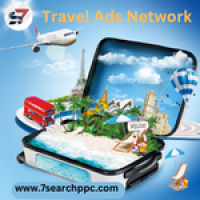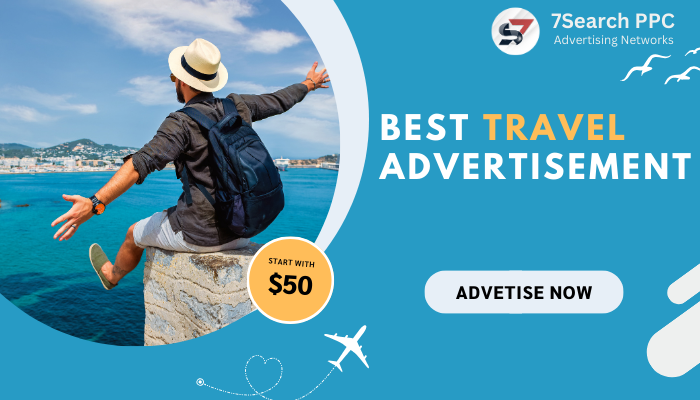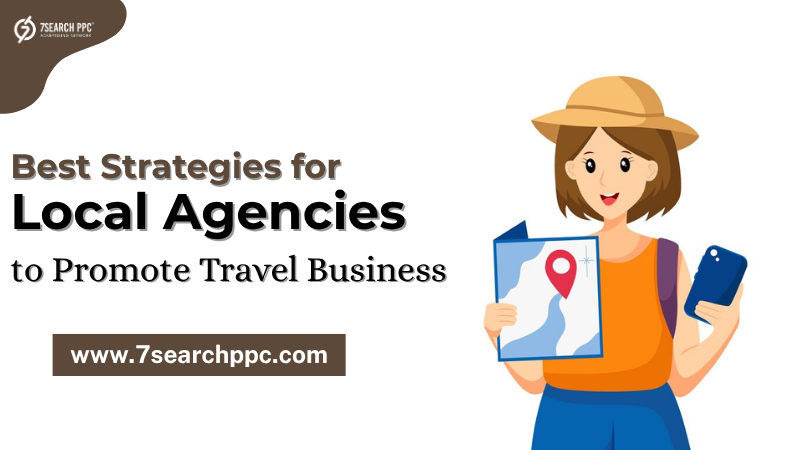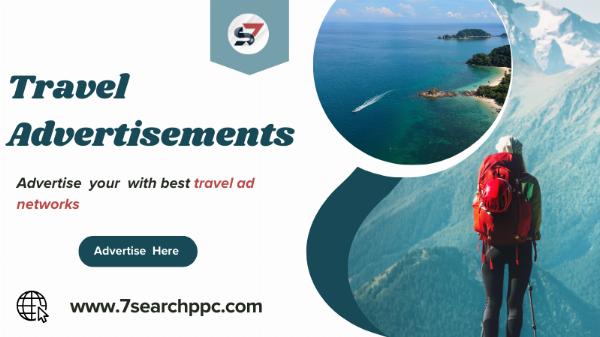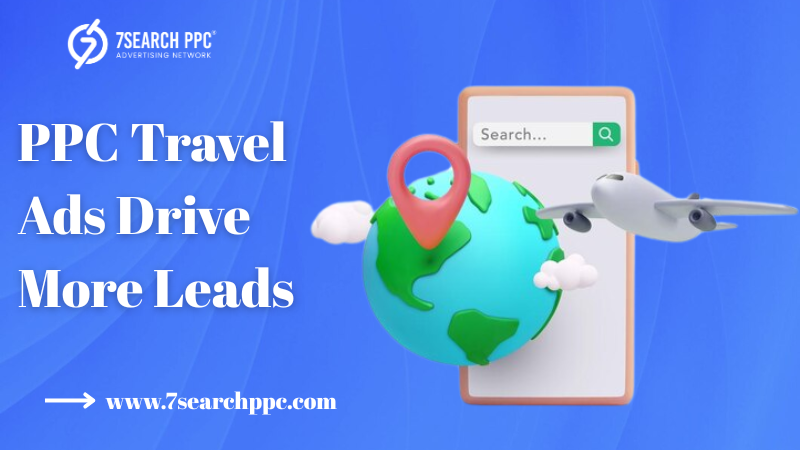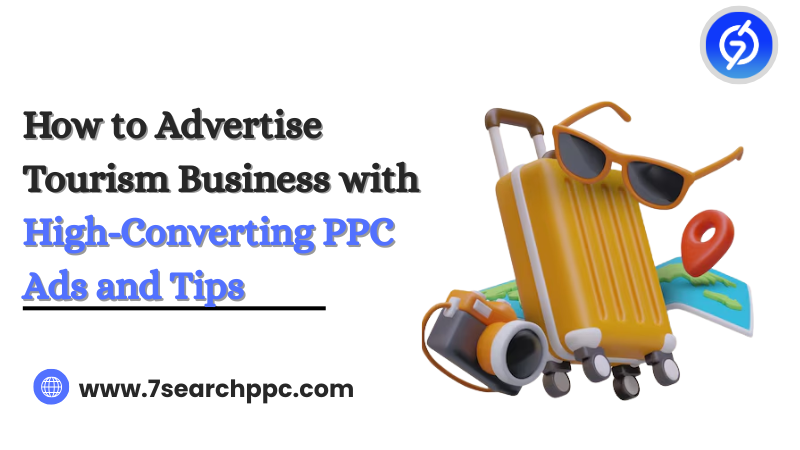Boost Your Tour & Travel Business with Effective PPC Travel Ads
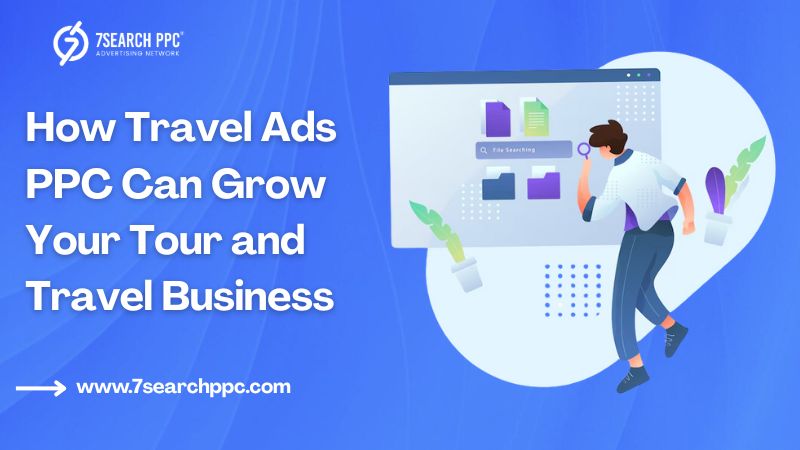
Unlike traditional ads, PPC appears at the top of Google or social platforms. This premium positioning increases the chance of capturing high-intent travelers. The system relies on auction-based bidding, where advertisers compete for top spots based on keyword relevance and budget.
Travel Ads PPC (Pay-Per-Click) allows travel businesses to pay only when someone clicks their ad. This model is efficient, targeted, and measurable. For tour operators and travel agencies, PPC ensures visibility in search results when potential travelers are actively searching.
PPC also supports retargeting. This means you can re-engage people who visited your site but didn’t book. Retargeting ads remind them of your offers, helping boost conversion rates.
Start Your Campaign Today!
Targeting the Right Audience with Travel PPC
Audience targeting is essential for travel PPC success. Use demographics like age, income, travel frequency, and device type. Target people actively planning vacations based on search behavior and booking history.
Geo-targeting lets you focus on travelers from specific regions, or even tailor ads to people already in your destination area looking for local tours.
Key Benefits of Using PPC for Travel Advertising
PPC for travel advertising brings multiple advantages. First, it delivers instant visibility. Once your campaign is live, your ads appear on search engines and partner sites.
Second, it’s budget-flexible. Small or large, any business can compete by targeting less competitive long-tail keywords.
Third, PPC allows detailed tracking. You can measure clicks, conversions, booking value, and cost per acquisition. This helps optimize return on ad spend (ROAS).
Fourth, PPC supports ad extensions like location, call buttons, site links, and reviews. These make ads more informative and increase click-through rates.
Finally, PPC lets you test messages. A/B testing headlines, descriptions, and visuals helps refine what resonates with your audience.
For tour and travel companies, PPC reduces dependency on organic rankings and boosts off-season traffic. It’s adaptable, scalable, and ideal for promoting time-sensitive deals like last-minute bookings or seasonal offers.
Choosing the Right Keywords for PPC Travel Ads
Keyword choice affects reach and cost. Focus on high-intent phrases like “book Paris tour package” or “cheap flights to Bali.” Use tools like Google Keyword Planner or Ubersuggest.
Mix short-tail (broad) and long-tail (specific) keywords. Long-tail terms are less competitive and attract better-quality leads.
Budgeting Tips for Travel PPC Campaigns
Set a daily or monthly limit based on customer lifetime value and desired cost per lead. Start small, monitor performance, and increase spending on high-converting campaigns.
Avoid bidding wars on popular terms. Instead, focus on niche offers or regional tours that have lower CPC (cost-per-click).
How to Set Up a Successful Travel PPC Campaign
Creating a travel PPC campaign involves several core steps.
Start by defining your campaign goal—whether it's bookings, lead generation, or brand awareness.
Next, segment your audience. Use parameters like location, device, travel intent, or even frequent flyer status.
Choose your ad platform. Google Ads is ideal for search-based intent, while Facebook or Instagram PPC works for visual promotion.
Build compelling ad copy. Highlight destination value, include clear CTAs, and use urgency (“Limited spots!”).
Design dedicated landing pages for each offer. These pages should load fast, be mobile-friendly, and lead directly to booking or inquiry forms.
Use conversion tracking via Google Analytics or your booking system. This helps connect ad spend to actual revenue.
Lastly, monitor your campaign. Adjust bids, pause low-performing ads, and test new creatives weekly.
Consistent optimization keeps your ads relevant and cost-effective.
Tools to Optimize PPC in the Travel Ad Industry
Use tools like Google Ads Editor for bulk edits and SEMrush or Ahrefs for keyword research. Platforms like AdEspresso help manage social PPC ads.
Analytics platforms such as Google Analytics and Hotjar track user behavior, showing what works and what needs tweaking.
Measuring Success: PPC Metrics for the Travel Industry
Tracking success in PPC means more than just clicks. Look at these core metrics:
- Click-Through Rate (CTR): High CTR shows your ad is relevant. Aim for 3%+.
- Conversion Rate (CVR): Tells how many visitors take action. Ideal CVR varies but 5–10% is common in travel.
- Cost Per Acquisition (CPA): The lower, the better. It measures how much you pay per booking or inquiry.
- Return on Ad Spend (ROAS): Compares revenue to ad spend. A ROAS of 3:1 or higher is considered good.
Use A/B testing to refine campaigns. Test headlines, ad placements, visuals, and CTAs. These changes can significantly improve performance.
Monitor seasonal trends. Travel booking patterns shift based on holidays, weather, and events. Align your PPC campaigns accordingly.
Reallocate budget from underperforming ads to top performers. Continuous refinement ensures consistent growth and better ROI.
Seasonal Trends in Travel Advertising
Summer and winter holidays drive demand. Plan higher bids during peak seasons and use countdown ads for urgency. Off-season PPC can promote deals to fill capacity.
Local vs. Global PPC Targeting
Global targeting helps reach international travelers. Local targeting is better for tours within specific regions. Tailor your strategy based on your business model.
Conclusion
Travel Ads PPC is a powerful tool that can significantly grow your tour and travel business by delivering immediate visibility and measurable results. Whether you’re looking to increase bookings, drive traffic to your website, or target specific traveler segments, PPC allows you to do so efficiently and effectively.
By targeting the right audience, using the best keywords, and continuously optimizing your campaigns, you can maximize the return on your ad spend. The flexibility of PPC makes it suitable for businesses of all sizes, from small tour operators to large travel agencies. It provides detailed metrics that help you make data-driven decisions, adjust your strategies, and ultimately increase conversions.
One platform that stands out in the travel advertising space is 7Search PPC. Known for its cost-effective solutions, 7Search PPC helps businesses target the right audience with tailored ads. Its easy-to-use interface, combined with detailed tracking and targeting capabilities, allows travel businesses to optimize their campaigns for maximum performance and ROI.
FAQs (Frequently Asked Questions)
What is PPC in travel advertising?
Ans: PPC (Pay-Per-Click) in travel advertising means paying only when someone clicks your ad. It helps tour companies appear in search results and generate bookings quickly.
Why should travel businesses use PPC?
Ans: PPC offers fast visibility, targeted reach, and measurable ROI. It's ideal for promoting seasonal deals or last-minute travel offers.
How much should I spend on a PPC travel campaign?
Ans: Start with a test budget (e.g., $500–$1,000). Scale based on performance. Track CPA and ROAS to avoid overspending.
Which platforms are best for travel PPC ads?
Ans: Google Ads and Bing are best for search intent. Facebook and Instagram are useful for visual campaigns and retargeting.
Can small tour operators compete using PPC?
Ans: Yes. Targeting long-tail keywords and niche markets allows smaller businesses to attract leads without large budgets.
Note: IndiBlogHub features both user-submitted and editorial content. We do not verify third-party contributions. Read our Disclaimer and Privacy Policyfor details.

